United States Mint
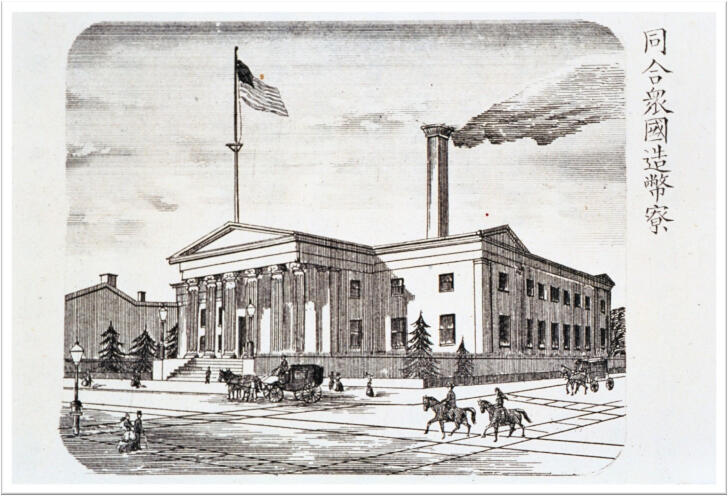
On July 29, 1872, the delegation visited the United States Mint, a building filled with coin-making. At the time, dimes and quarters were roughly 90% real silver, while pennies were 95% copper. The delegates watched as blocks of silver and copper were melted at extreme heat into thin sheets, then cut with circular punches into the correct denomination. Crafting coins was an intricate process, with skilled human labor and machines working under thin margins for error. The group marveled at the careful system of large flat trays, scales with indented holes, and funnels, that allowed freshly minted coins to be sorted into cloth bags. Back in Japan, changes in the […]
Iron and Steel Manufacturing
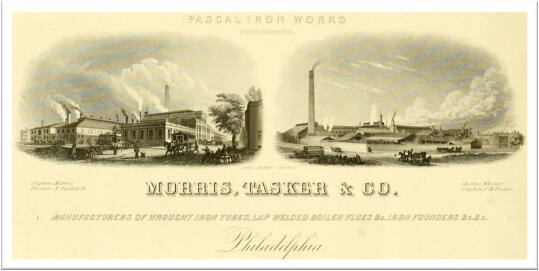
During the delegation’s tour of Philadelphia, they learned about the city’s famous history of iron and steel manufacturing. Local plants were incredibly successful, due in large part to Pennsylvania’s natural abundance of high-quality coal and iron mines. The industries had transformed the economic and natural landscape of the area, and had also stimulated other forms of production in the city. Kunitake Kume noted that the spinning industry had stimulated the production of cotton, wool, and linen across the state.
Department of the Treasury
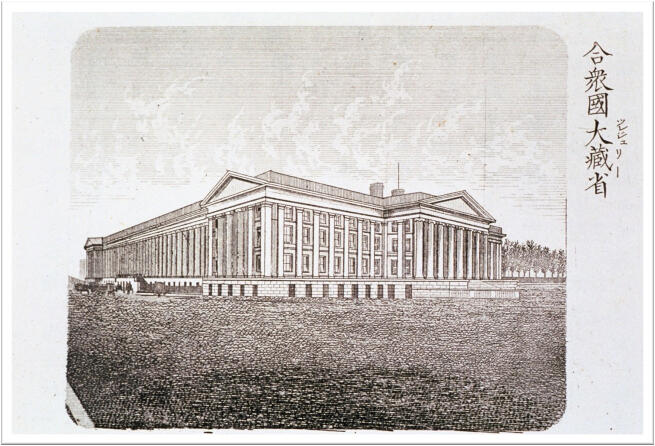
While in Washington D.C the delegates visited the Department of the Treasury, where the nation’s currency was printed. The group was drawn to the intricate process of printing paper money, a method that required efficient collaboration between machines and manual laborers. The delegates were especially impressed by how meticulous the printing presses were, as each was able to create a unique design on the bills. Just as they had noticed at the U.S Printing Office, many female workers were employed in the stations of the Treasury that required the highest level of precision and attention to detail. During the time of the Iwakura Mission the notes used in Japan had […]
Streets of Washington D.C.
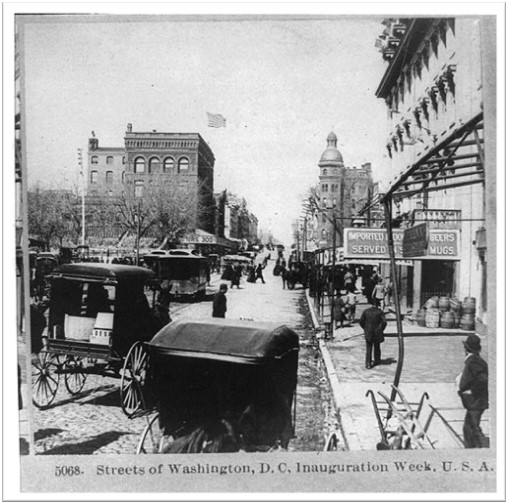
On February 6, 1872, the delegation headed to the United States Capitol building. They arrived via Pennsylvania Avenue, marveling at the immaculate roads surrounded by beautiful winter trees and flora. The group commented that the streets were laid out like a Go board, with the four large avenues – Pennsylvania, Delaware, Maryland, and New Jersey – converving on the great Capitol. Kanitake Kume was impressed by the evenness of the stone road, and made a note that it allowed people to haul loads several times heavier than what was possible on Japan’s roadways. Upon the delegation’s return home, the Meiji government invested heavily in road infrastructure across Japan, striving to […]
Patent Office
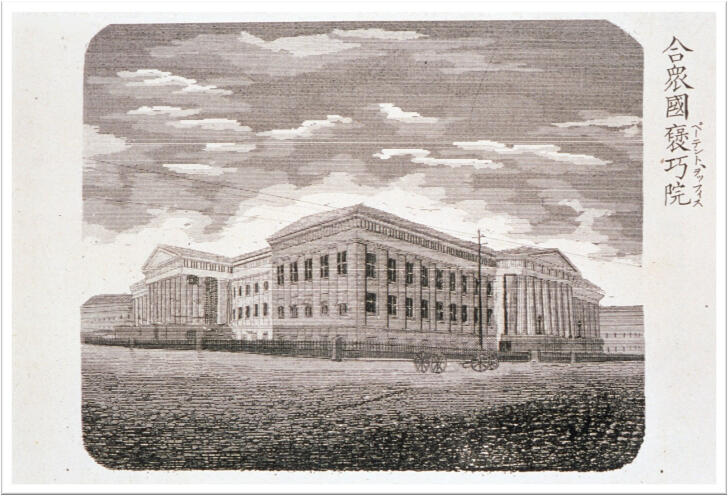
During the afternoon of April 2, 1872, the delegates made a trip to the U.S Patent Office. The group was impressed by the thousands of inventions listed and on display – everything from toys to steamship designs. Kume Kunitake, the avid diarist of the journey, translated the name of the building to, “the Institution for rewarding ingenious inventions” (褒巧院). Kume noted that the degree of recognition given to an invention was determined by its quality. According to him, Americans were most proud of their mechanical and machine-related achievements, most notably the steamship and the eclectic telegraph. Soon after the group returned to Japan, the Meiji government issued an ordinance to […]
Printing Office
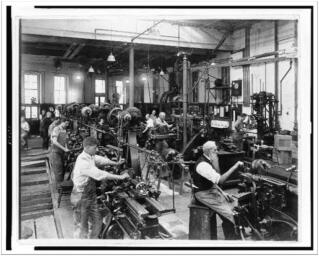
The delegates’ visit to the U.S Printing Office in Washington D.C struck a chord – the whole group was attracted by the calm and calculated atmosphere of the working environment. They witnessed synchronicity in action during a tour of the composing room on the top floor. From above, the delegates watched as mechanical typesetting, stereotyping, and printing services worked in tandem using steam power. While men and women worked side-by-side in the office, the group observed that roles requiring greater precision, such as typesetting, were dominated by women. Kunitake Kume made a note that because of the newfound technological progress in machinery, which had turned printing into a relatively inexpensive […]
Postal Service Headquarters
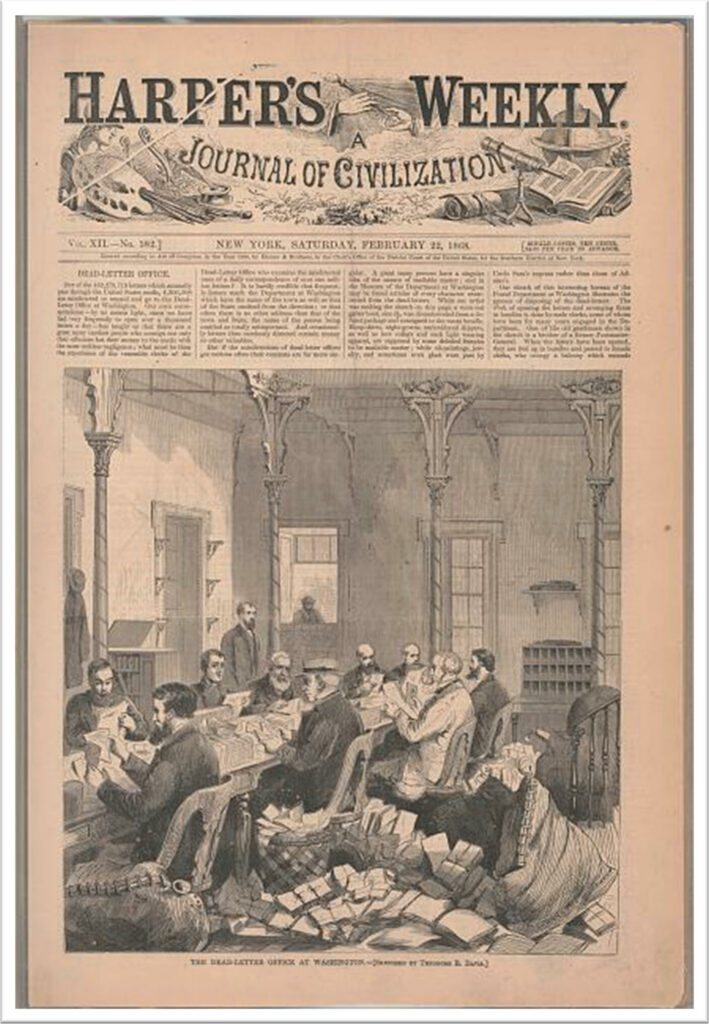
On April 30 1872, the Iwakura Mission group visited the Washington D.C headquarters of the United States Postal Service (USPS). They toured the dead letter office, piled high with undeliverable mail, and went through the sorting and delivery departments. The guide informed the delegates that while the USPS excelled at delivering letters and parcels, other independent services were better suited to ship precious metals or other fragile commodities. The group was surprised to learn that the USPS could deliver mail to Yokohama or Nagaski via international delivery! Kunitake Kume noted the ability to transport information through a national postal system was a crucial aspect of economic growth. Kume surmised that […]
National Observatory in Georgetown
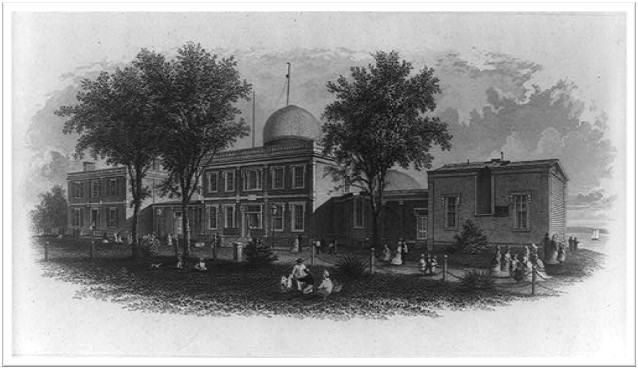
On April 23, 1872, the delegation was granted access to the United States Naval Observatory and its 10-foot-long equatorial telescope. Three stories high and overlooking the Potomac River, the telescope allowed the group to observe the movements of celestial objects such as the moon and stars in detail in addition to Mercury and the moons of Jupiter. Only five years later, in 1877, the same observatory would gain international attention for discovering the two moons of Mars. The building still exists today and serves as a National Historic Landmark. Astronomical observations were limited in Japan until the Meiji era (1868 – 1912), when the government tasked astronomers to calculate the […]
Streetcars
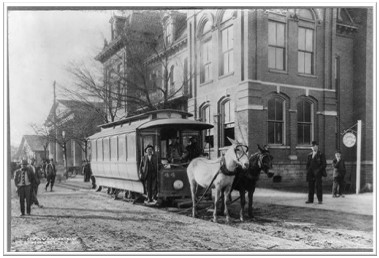
During the delegates’ time in Washington D.C, they encountered streetcars passing through the bustle of the boulevards. Pulled by horses, the cars were used to transport freight, baggage, and as many as fifty people. The group marveled at the vehicle’s ability to carry so many passengers and cargo with ease. Kunitake Kume suspected that the streetcars were so efficient because of their superior wheel craftsmanship, coupled with the city’s well-surfaced roads.
Broadway
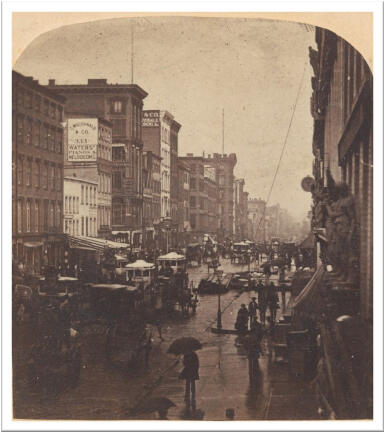
Broadway was a beautifully chaotic boulevard in 1872, and the Iwakura delegation were in awe of the multitude of New Yorkers commuting by carriage, bus, and on foot. Kunitake Kume wrote that the density of the city was unmatched by anything they had experienced before. It seemed as if all roads led back to New York City – a metaphorical Rome for the modern era. The delegates thought Broadway’s cobblestone roads, lined with businesses and stalls selling all types of goods, was comparable to a festival. It seemed to them the busiest street in the world!
